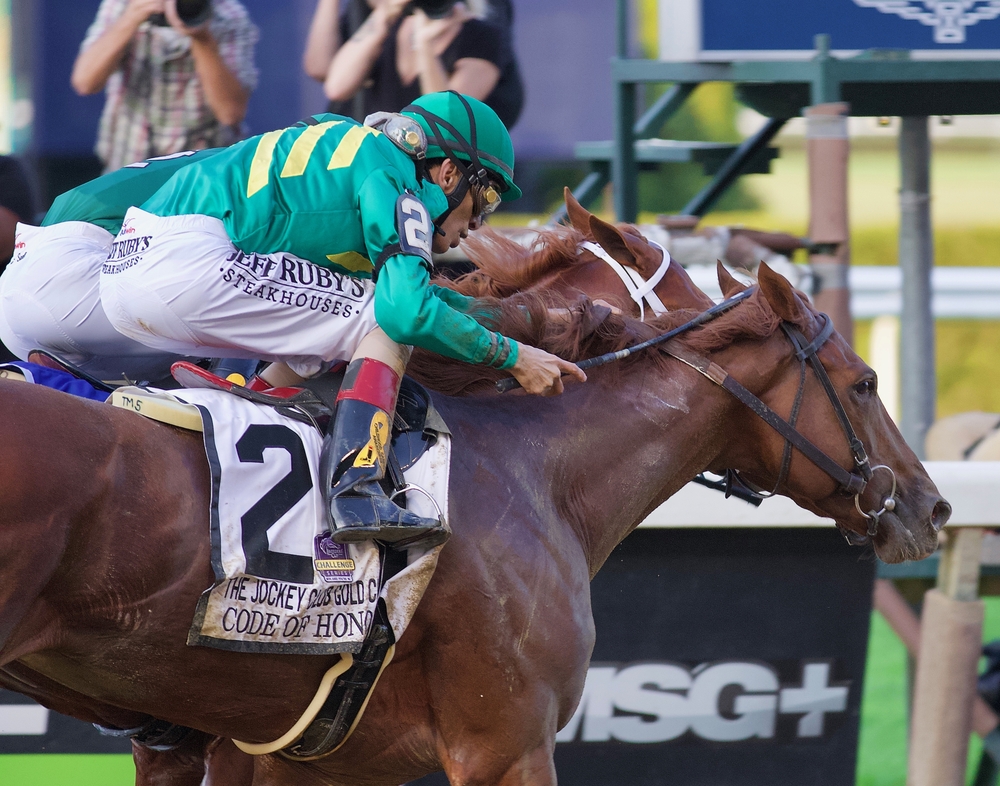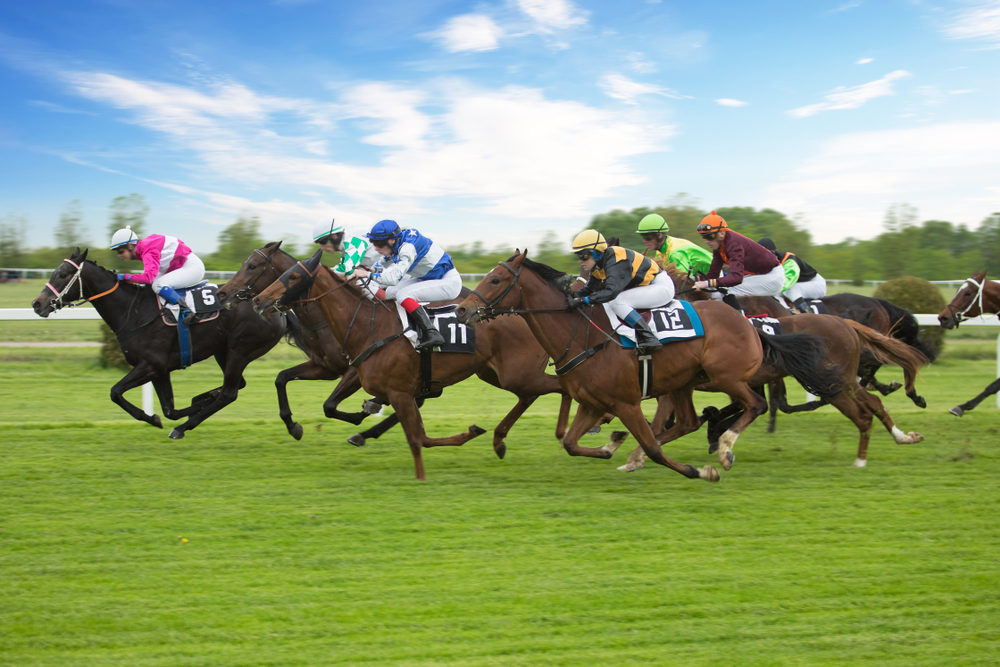Speed figures are a valuable tool for handicappers in horse racing. These figures are a numerical representation of a horse’s past performances and can help bettors identify which horses are likely to perform well in upcoming races. By understanding how to use speed figures, bettors can make more informed wagers and increase their chances of winning.
To use speed figures effectively, bettors should first understand how they are calculated. Generally, speed figures are based on a horse’s finishing time and the difficulty of the track or race. Some systems also take into account other factors, such as weight carried by the horse or the jockey’s performance. By looking at a horse’s speed figures from past races, bettors can get a sense of how well the horse is likely to perform in the future.
What are Speed Figures?
Speed figures are a numerical representation of a horse’s performance in a race. They are a tool that handicappers use to compare horses’ past performances and to predict how they will perform in future races.
The most commonly used speed figures are the Beyer Speed Figures, which were created by Andrew Beyer in the 1970s. Beyer Speed Figures take into account the time of the race, the track condition, and the distance of the race to calculate a horse’s speed rating.
Other speed figures include Equibase Speed Figures, TimeformUS Speed Figures, and Racing Post Ratings. Each of these speed figures has its own methodology for calculating a horse’s speed rating, but they all aim to provide a reliable measure of a horse’s performance in a race.
Why are speed figures important in horse racing?
Speed figures are an essential tool for horse racing handicappers, trainers, and jockeys. They provide a numerical representation of a horse’s performance in a race, which can help predict its future performance. Speed figures are calculated based on a horse’s time and distance in a race, adjusted for track conditions and other factors.
Speed figures allow handicappers to compare horses’ performances across different races and tracks. They also help to identify horses that may be improving or declining in form. By using speed figures, handicappers can make more informed betting decisions and increase their chances of winning.
Speed figures are especially useful for identifying horses that may be undervalued by the betting public. If a horse has consistently run faster than its odds suggest, it may be a good value bet. Conversely, if a horse has consistently run slower than its odds suggest, it may be a good idea to avoid betting on it.
Speed figures are not the only factor to consider when handicapping a horse race, but they are an important one. Other factors to consider include a horse’s form, class, jockey, trainer, and track conditions. However, speed figures provide a solid foundation for handicapping and should be a part of every handicapper’s toolkit.
How are Speed Figures Calculated?
Raw Speed Figures
Raw speed figures are calculated by timing a horse’s performance in a race and then adjusting it for track conditions and distance. The most commonly used method for calculating raw speed figures is the Beyer Speed Figure, named after its creator, Andrew Beyer.
The Beyer Speed Figure is calculated by taking into account the time of the race, the condition of the track, and the weight carried by the horse. The Beyer Speed Figure is a single number that represents the horse’s performance in the race. The higher the number, the better the performance.
For example, a horse that runs a Beyer Speed Figure of 100 is considered to have run a very fast race, while a horse that runs a Beyer Speed Figure of 80 is considered to have run an average race.
Variant Speed Figures
Variant speed figures take into account the speed of the track on the day of the race, and are used to adjust raw speed figures for track bias. Track bias refers to a situation where the track is favouring horses that run in a particular position or on a particular part of the track.
Variant speed figures are calculated by comparing the actual time of the race to the expected time of the race based on the track’s historical speed figures. If the actual time is faster than the expected time, the variant speed figure will be negative. If the actual time is slower than the expected time, the variant speed figure will be positive.
Variant speed figures are important because they allow handicappers to compare the performance of horses on different days and at different tracks. They also help to identify horses that may have run better or worse than their raw speed figures suggest due to track bias.
In summary, speed figures are calculated by timing a horse’s performance in a race and then adjusting it for track conditions, distance, and track bias. Raw speed figures are adjusted for track bias using variant speed figures, which take into account the speed of the track on the day of the race.
How to Use Speed Figures in Handicapping
Speed figures are an essential tool in handicapping horse races. They provide a numerical representation of a horse’s performance in a race, making it easier to compare horses and identify value bets. Here are some tips on how to use speed figures in handicapping:
Comparing Speed Figures
When comparing speed figures, it’s important to consider the track, distance, and surface of each race. A horse that runs a fast speed figure on a fast dirt track at six furlongs may not be as impressive as a horse that runs a slightly slower speed figure on a muddy track at a mile and a quarter. It’s also important to compare a horse’s speed figures over multiple races to identify patterns and trends.
Another factor to consider when comparing speed figures is the class of the race. A horse that runs a fast speed figure in a claiming race may not be as impressive as a horse that runs a slightly slower speed figure in a stakes race.
Using Speed Figures to Identify Value Bets
One of the main benefits of using speed figures in handicapping is that they can help identify value bets. A value bet is a horse that is more likely to win than the odds suggest. By comparing a horse’s speed figures to the morning line odds, a handicapper can identify horses that are being overlooked by the betting public.
For example, if a horse has consistently run speed figures that are higher than the morning line odds suggest, it may be a good value bet. Conversely, if a horse has consistently run speed figures that are lower than the morning line odds suggest, it may be a bad value bet.
Using Speed Figures in Conjunction with Other Handicapping Factors
While speed figures are an important handicapping tool, they should not be the only factor considered when handicapping a race. Other factors to consider include class, form, pace, and trainer and jockey statistics.
For example, if a horse has consistently run fast speed figures but has been racing against weaker competition, it may not be as impressive as a horse that has been racing against tougher competition but has slightly slower speed figures.
When using speed figures in conjunction with other handicapping factors, it’s important to consider the relative importance of each factor and to weigh them accordingly.
Common Mistakes to Avoid When Using Speed Figures
Speed figures are an essential tool for any horse racing handicapper who wants to make informed betting decisions. However, there are some common mistakes that many handicappers make when using speed figures. Here are a few things to avoid:
- Ignoring track biases: Speed figures are calculated based on a horse’s performance in a particular race, but they don’t take into account any biases that may exist on the track. For example, if the inside post positions are performing well on a particular day, horses starting from the outside may have a disadvantage. It’s important to take track biases into account when using speed figures.
- Using outdated figures: Speed figures are only as good as the data they are based on. If you’re using figures from a few races ago, they may not accurately reflect a horse’s current form. It’s important to use the most up-to-date figures available.
- Overemphasizing speed figures: While speed figures are an important tool, they should not be the only factor you consider when handicapping a race. Other factors, such as class, form, and track conditions, should also be taken into account.
- Not adjusting for distance: Speed figures are calculated based on the distance of a particular race. If a horse is moving up or down in distance, its speed figures may not be directly comparable to its previous races. It’s important to adjust for distance when using speed figures.
By avoiding these common mistakes, handicappers can make more informed betting decisions and improve their chances of success at the track.
Conclusion
Using speed figures can be a valuable tool for horse racing handicappers. It allows them to compare the performance of horses in different races and at different distances. However, it is important to understand that speed figures are just one piece of information that should be considered when making a bet.
Handicappers should also take into account other factors such as track conditions, jockey performance, and the horse’s recent form. It is also important to keep in mind that speed figures are not infallible and should be used in conjunction with other handicapping methods.
When using speed figures, it is important to understand the different types of figures available and how they are calculated. Some figures are based on raw times, while others take into account factors such as track bias and pace.
Handicappers should also be aware of the limitations of speed figures. For example, they may not accurately reflect a horse’s ability on a particular day or in a particular race. Additionally, they may not take into account factors such as a horse’s physical condition or recent workouts.
Overall, speed figures can be a useful tool for handicappers, but they should not be relied upon exclusively. By combining speed figures with other handicapping methods, handicappers can increase their chances of making a successful bet.





